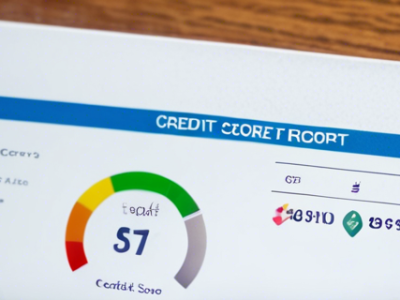Setting Financial Goals to Reach by Age 30, 40, and 50

Establishing clear financial goals tailored to your current life stage and priorities can help provide focus, motivation, and a roadmap for making smart money decisions. Whether you’re in your 20s, 30s, 40s, or 50s, setting actionable targets for where you want your finances to be at different milestone ages is the first step toward eventually achieving those aims. This comprehensive guide examines smart financial goals to work towards at ages 30, 40, and 50 based on general best practices while allowing flexibility to customize based on your unique circumstances and values.
Financial Goals for Age 30
In your 20s, financial planning revolves around building foundations for future stability. Common financial goals to target by age 30 include:
Generate Savings of 1x Annual Salary
By 30, aim to have saved at least one times your annual salary. This provides an emergency fund, ability to invest, and cushion for unexpected expenses without resorting to debt. Save 15-20% of your income.
Contribute to Retirement Accounts
Start regularly contributing to tax-advantaged retirement accounts like 401(k)s, IRAs, and Roth IRAs by your mid-20s. Benefit from decades of tax-deferred growth and compounding investment returns.
Pay Down Student Loans
Aggressively pay down high interest student debt that weighs down your cash flow. Refinance loans where possible. Establish automatic payments to pay loans on time and qualify for borrower benefits.
Establish Good Credit
Build a strong credit score and history by using credit cards responsibly, paying balances on time, limiting hard credit checks, and avoiding late payments on obligations. Aim for a minimum 720 FICO score.
Purchase Professional Attire
Invest in versatile, high-quality professional clothing that projects confidence and competence as you establish your career. Appearances and perception matter in the workplace.
Set Career Development Goals
Pursue training, mentorship opportunities, and expanded job responsibilities to gain new skills. Develop expertise in high-demand fields with growth potential.
Begin Investing Outside Retirement Accounts
Once you have an emergency fund, utilize non-retirement accounts to buy stocks, ETFs, mutual funds aligned with your risk tolerance and time horizon.
Financial Goals for Age 40

By the time you reach your 40s, the focus shifts towards protecting and growing what you’ve built while balancing growing financial obligations:
Have 3-6 Months’ Expenses in Cash
Maintain an emergency fund of 3-6 months’ living expenses in cash accounts to handle unexpected crises without taking on debt. Periodically review if more cash is needed as expenses rise.
Save & Invest 15% of Gross Income
Continue to save and invest at least 15% of your gross income into retirement, taxable, and other investment accounts. Don’t let lifestyle inflation curb diligent saving habits developed in your 20s and 30s.
Buy Life & Disability Insurance
Purchase adequate term life insurance equal to 10-20 times your annual income to protect dependents. Also obtain disability insurance to replace lost income if unable to work due to injury or illness.
Boost Retirement Contributions
Squeeze maximum dollars into 401(k), IRA, HSA, and other retirement accounts to capitalize on compound growth. Mahimize any employer match. Catch up on contributions if you fell behind earlier.
Eliminate Consumer Debt
Aggressively pay off high-interest credit card balances, auto loans, and other consumer debt obligations. Avoid racking up costly new debt outside mortgages.
Discuss Estate Planning with Advisor
Meet with an estate planning attorney to create wills, assign power of attorney designations, establish trusts, and strategically titler assets. Protect your family with prudent estate planning.
Set Education Savings Goals
Project future college costs for children based on current trends. Open 529 accounts and set monthly contribution targets to work towards covering at least 50% of projected higher education expenses.
Buy vs. Rent Analysis
Weigh the pros and cons of buying a home versus continuing to rent based on your situation. Build a down payment if buying is advantageous.
Financial Goals for Age 50
Later in your 50s, financial diligence allows reaping what you’ve sown. Typical money goals for age 50 include:
Max Out Annual Retirement Contributions
Make the maximum allowable contributions to 401(k)s, IRAs, HSAs, and other tax-advantaged retirement accounts to optimize your balance by retirement age. This includes catch-up contributions.
Have 10x Annual Salary Saved
Aim to have at least ten times your current gross annual income in retirement and investment accounts to sufficiently fund your post-career years.
Identify Passive Income Sources
Find ways to generate passive income streams like annuities, rental real estate, dividend stocks, P2P lending, and bond ladders that provide regular cash flow in retirement years.
Become Debt-Free
Pay off your mortgage, auto loans, student debt and any lingering consumer debts so you can enter retirement with minimal fixed monthly obligations. This maximizes retirement cash flow.
Set Multi-Year Retirement Budget
Project your envisioned retirement lifestyle expense budget based on major categories like travel, healthcare, housing, food, entertainment. Build assets to align with expected spending.
Consult Medicare Advisor
Meet with a Medicare insurance expert 12-18 months before age 65 to evaluate timing of enrolling in Medicare Parts A, B, C, and D based on your health and prescription needs and coverage options.
Review Beneficiary Designations
Audit that named beneficiaries on all retirement accounts, life insurance policies, annuities, and transfer-on-death investment accounts accurately reflect your current wishes. Update forms as needed.
Move Towards Safe Assets
Gradually shift portfolio mix as retirement nears from growth assets towards income-oriented and lower-volatility securities better suited to fund near-term spending needs.
Adjusting Goals Based on Life Stage
While establishing general milestones and benchmarks for where you want your finances to be at age 30, 40 and 50 is helpful, also retain flexibility to tailor plans based on your unique circumstances and evolving priorities.
Assess if common saving rules need adjusting for factors like:
- Starting saving and investing later in life due to career change or education
- Pause in career to have children and associated costs
- Unexpected periods of unemployment or underemployment
- Helping support parents or adult children financially
- Developing health issues and disability challenges
- Going through major life events like marriage, divorce, deaths
Be realistic about your particular situation when setting financial goals. Don’t rigidly adhere to generalized assumptions that don’t apply. Gauge whether target ages for different milestones need pushed back or forward to align with your resources and obligations.
Steps to Reach Target Goals

Setting clear financial targets for each decade is helpful for providing direction. But how can you pragmatically work towards reaching those aims? Key steps for goal achievement include:
Detail Specific Action Plans
For each stated goal like saving for a down payment or eliminating credit card debt, devise a detailed monthly or annual plan to chip away at it. Plans give direction.
Automate Saving & Investing
Leverage tools like automatic payroll deductions, bank account transfers, and automated portfolio rebalancing to systematize disciplined saving and investing habits.
Limit Lifestyle Inflation
As income rises, avoid the tendency to increase discretionary spending on bigger houses, cars, dinners out. Moderating lifestyle inflation helps redirect funds to goals.
Track Net Worth
Calculate net worth regularly to assess if you’re progressing towards targets. Breaking down progress motivates.
Review Budget Trade-Offs
When goals conflict, thoughtfully review budget and reassess priorities. For example, pause retirement savings temporarily to build emergency fund or save for a house.
Seek Tax Optimization
Tax loss harvesting, contributing to tax-deferred accounts, gifting appreciated assets, and optimizing capital gains can minimize taxes to help stretch dollars towards financial aims.
Tailoring Goals to Your Values
In addition to the common financial milestones discussed already, take time to introspect on your personal values and how those should shape the goals you establish. Reflect on questions like:
- What are my passion areas I want finances to support?
- How do I define “success” for my money and career?
- How much is “enough” savings and income for me to feel secure?
- How can my resources help family and causes important to me?
- What legacy and impact do I want to leave with my wealth?
Customizing financial goals based on your unique values and priorities results in targets that resonate more deeply and provide fulfillment along with financial achievement.
Common Financial Goals to Strive For
While individuals need to personalize goals to their circumstances, here are some examples of popular financial aims in one’s 30s, 40s and 50s:
30s
- Save for a house down payment
- Go back to school to change careers
- Get out of credit card debt
- Build a 3-6 month emergency fund
- Start college savings for kids
- Take a dream vacation
40s
- Pay off student loans
- Save 20% towards retirement
- Create wills and assign POA
- Open a 529 college savings plan
- Get life insurance to protect family
- Move to a new city or country
50s
- Pay off home mortgage
- Visit dream destinations
- Gift money to children/grandkids
- Donate more to charities
- Obtain long-term care insurance
- Buy vacation/retirement property
Revisiting and Evolving Goals Over Time
Life changes and external events can disrupt the most carefully designed financial plans. It’s essential to periodically revisit your goals and revise them as needed to reflect new realities.
As you move through different decades and life stages, reconsider if original goals still make sense or need modification based on factors like:
- Change in marital status
- Having children
- Caring for aging parents
- Helping adult children financially
- Developing health conditions
- Switching careers
- Scaling back work hours
- Moving to a new area with different costs
- Experiencing a setback like job loss or disability
- Inheriting money
Goals shouldn’t remain static. Reevaluate them every few years to ensure they still align with your values and circumstances. Adjust saving rates and targets accordingly.
Getting Back on Track After Setbacks
Despite best efforts, many will experience setbacks along the path that derail financial plans, like job losses, illnesses, divorces, or bad investments. Don’t beat yourself up. Refocus on taking the necessary steps to get back on a productive track:
- Review budget trade-offs – Identify discretionary expenses to trim to redirect cash towards recovery and goals. You may choose to pause some goals temporarily.
- Access your support network – Whether family, friends or professional groups, lean on your personal and professional communities to provide perspective, accountability and encouragement.
- Leverage resources – Tap government, non-profit and personal resources available like unemployment benefits, job retraining programs, medical assistance, temporary debt relief, and personal loans to help bridge the crisis.
- Focus forward – Once the initial emotions subside, refocus energy on the next productive step instead of lamenting the setback. Establish a plan and work it.
- Change course – If the setback highlights an unrealistic goal or priority, use it as a catalyst to set a new direction. Think critically about needed life changes.
With perseverance and a renewed focus, you can regain lost momentum and continue progressing towards your revised financial aims. Don’t lose hope.
Conclusion
Setting well-conceived financial goals for ages 30, 40 and 50 provides helpful guideposts to orient decisions and behaviors. But recognizing life’s fluidity, be flexible to tailor plans based on evolving circumstances. Check-in periodically to keep goals relevant. Despite inevitable setbacks, consistent progress towards realizing your values through smart personal finance decisions can create an enriched life on your own unique terms.
Frequently Asked Questions
What’s the recommended guideline for total retirement savings by age 50?
Experts suggest aiming to have total retirement savings equal to at least 10 times your annual income by age 50 through 401(k) plans, IRAs, brokerage accounts, home equity and other assets.
What should you prioritize if you start saving for retirement later in life?
Maximize catch-up contributions, shift to more aggressive portfolio allocations to catch up, work longer to increase Social Security benefits, eliminate all debt before retiring to reduce expenses.
How does having children impact recommended financial timelines and milestones?
Major costs associated with having kids like daycare, education expenses, activities, food, healthcare, college savings goals often necessitate pushing back typical timelines for buying a house, aggressive wealth accumulation, and retiring early.
What steps can you take to get back on track after a financial setback like job loss or medical emergency?
Review budget trade-offs, access government and non-profit assistance programs, lean on your support circle for accountability and encouragement, avoid self-criticism, take things one day at a time.
What are smart financial goals for young adults in their early 20s to set?
Building emergency savings fund, aggressively paying down student loans, establishing 401(k) contributions, buying used car in cash, building credit score responsibly, advancing your education/skills, starting a side hustle, traveling on a budget.









